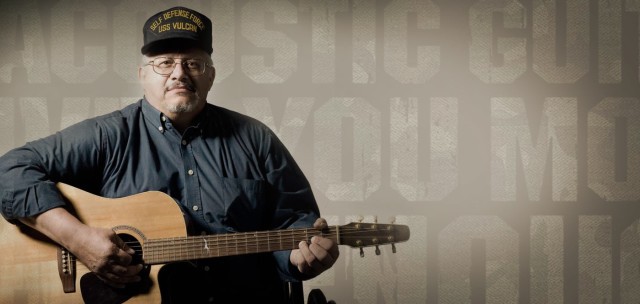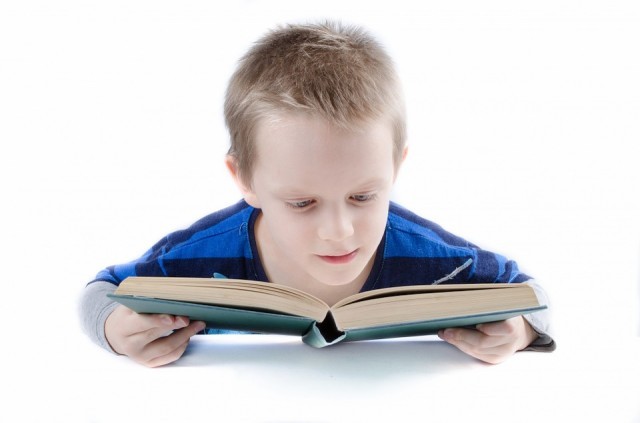Doctors Now Prescribing Music Therapy for Heart Ailments, Brain Dysfunction, Learning Disabilities, Depression, PTSD, Alzheimers, Childhood Development and More
Music has proven time and again to be an important component of human culture. From its ceremonial origin to modern medical usage for personal motivation, concentration, and shifting mood, music is a powerful balm for the human soul. Though traditional “music therapy” encompasses a specific set of practices, the broader use of music as a therapeutic tool can be seen nowadays as doctors are found recommending music for a wide variety of conditions.
1Music Helps Control Blood Pressure and Heart-Related Disorders

According to The Cardiovascular Society of Great Britain, listening to certain music with a repetitive rhythm for least ten seconds can lead to a decrease in blood pressure and a reduced heart rate. Certain classical compositions, if matched with human body’s rhythm, can be therapeutically used to keep the heart under control. The Oxford University study states, “listening to music with a repeated 10-second rhythm coincided with a fall in blood pressure, reducing the heart rate” and thus can be used for overcoming hypertension.
2Listening and Playing Music Helps Treat Stress and Depression

When it comes to the human brain, music is one of the best medicines. A study at McGill University in Canada revealed that listening to agreeable music encourages the production of beneficial brain chemicals, specifically the “feel good” hormone known as dopamine. Dopamine happens to be an integral part of brain’s pleasure-enhancing system. As a result, music leads to great feeling of joy and bliss.
It’s not only listening to music that has a positive effect on stress and depression. The Namm Foundation has compiled a comprehensive list of benefits of playing music, which includes reducing stress on both the emotional level and the molecular level. Additionally, studies have shown that adults who play music produce higher levels of Human Growth Hormone (HgH), which according to Web MD, is a necessary hormone for regulating body composition, body fluids, muscle and bone growth, sugar and fat metabolism, and possibly heart function.
For more on how music can be composed to benefit the brain, read about States of Consciousness and Brainwave Entrainment.
3Music Therapy Helps Treat Alzheimer’s Disease

Music therapy has worked wonders on patients suffering from Alzheimer’s disease. With Alzheimer’s, people lose their capacity to have interactions and carry on with interactive communications. According to studies done in partnership with the Alzheimer’s Foundation of America, “When used appropriately, music can shift mood, manage stress-induced agitation, stimulate positive interactions, facilitate cognitive function, and coordinate motor movements.”
4Studying Music Boosts Academic Achievement in High Schoolers

Early exposure to music increases the plasticity of brain helping to motivate the human brain’s capacity in such a way that it responds readily to learning, changing and growing. “UCLA professor James S. Catterall analyzed the academic achievement of 6,500 low-income students. He found that, by the time these students were in the 10th grade, 41.4% of those who had taken arts courses scored in the top half on standardized tests, contrasted with only 25% of those who had minimal arts experience. The arts students also were better readers and watched less television.” This goes to show that in the formative stages of life, kids who study music do much better in school.
5Playing Guitar (and Other Instruments) Aids in Treating PTSD

The U.S. Department of Veterans Affairs shared a study in which veterans experiencing Post Traumatic Stress Disorder (PTSD) experienced relief by learning to play guitar. The organization responsible for providing guitars, Guitars For Vets “enhances the lives of ailing and injured military Veterans by providing them free guitars and music instruction.” Playing music for recovery from PTSD resembles traditional music therapy, in which patients are encouraged to make music as part of their healing process. Guitar is not the only instrument that can help PTSD. In fact, Operation We Are Here has an extensive list of Therapeutic Music Opportunities For Military Veterans.
6Studying Music Boosts Brain Development in Young Children

A research-based study undertaken at the University of Liverpool in the field of neuroscience has light to shed on the beneficial effects of early exposure to music. According to the findings, even half an hour of musical training is sufficient to increase the flow of blood in the brain’s left hemisphere, resulting in higher levels of early childhood development.
The Portland Chamber Orchestra shares, “Playing a musical instrument involves multiple components of the central (brain and spinal cord) and peripheral (nerves outside the brain and spinal cord) nervous systems. As a musician plays an instrument, motor systems in the brain control both gross and fine movements needed to produce sound. The sound is processed by auditory circuitry, which in turn can adjust signaling by the motor control centers. In addition, sensory information from the fingers, hands and arms is sent to the brain for processing. If the musician is reading music, visual information is sent to the brain for processing and interpreting commands for the motor centers. And of course, the brain processes emotional responses to the music as well!”
7Music Education Helps Children Improve Reading Skills

Journal Psychology of Music reports that “Children exposed to a multi-year program of music tuition involving training in increasingly complex rhythmic, tonal, and practical skills display superior cognitive performance in reading skills compared with their non-musically trained peers.” In the initial stages of learning and development, music arouses auditory, emotional, cognitive and visual responses in a child. Music also aids a child’s kinesthetic development. According to the research-supported evidence, a song facilitates language learning far more effectively than speech.
8Listening To Music Helps Improve Sleep

According to The Center for Cardiovascular Disease in China, listening to music before and during sleep greatly aids people who suffer from chronic sleep disorders. This “music-assisted relaxation” can be used to treat both acute and chronic sleep disorders which include everything from stress and anxiety to insomnia.
9Playing Didgeridoo Helps Treat Sleep Apnea

A study published in the British Medical Journal shows that people suffering from sleep apnea can find relief by practicing the Australian wind-instrument known as the didgeridoo. Patients who played the didgeridoo for an average of 30-minutes per day, 6 days per week, saw significant increases in their quality of sleep and decreases in daytime tiredness after a minimum period of 3-months of practice. Dr. Jordan Stern of BlueSleep says, “The treatment of sleep apnea is quite challenging because there is not a single treatment that works well for every patient. The didgeridoo has been used to treat sleep apnea and it has been shown to be effective in part because of strengthening of the pharyngeal muscles, which means the muscles of the throat, as well as the muscles of the tongue.”
What else is music prescribed for?
This list is only a small sample of what doctors, therapists and healers are doing with music. We’d love to hear from you. What other thereapeutic uses does music have? Post your answer in the comments below.
Thanks for reading!
Subscribe To Our Mailing List to receive the latest Tutorials, Articles, Events and Downloads directly in your inbox:
This article was created in collaboration between Didge Project director AJ Block and guest author Gracy Liura.
Author Bio: Gracy Liura
 Gracy Liura is a nutritionist based in New Delhi who actively works on the Human Chorionic Gonadotropin Research portal. One aspect of Gracy’s work is based on the connection between music and the cardio-vascular system of the human body. She says “There are medical set-ups that have introduced slow and soothing music of slower-beat, just to minimize the cost incurred by providing sedatives.” As said previously, light music that flows at the rhythmic rate of ten seconds is effective in lowering the pulse rate. Such compositions also bring high systolic and diastolic pressure under the control, and thus motivate the patients into a state of sound slumber. Not only for therapeutic uses, but if you want to be more successful and more productive than your counterparts; then, you either need to play music, or become an avid listener.
Gracy Liura is a nutritionist based in New Delhi who actively works on the Human Chorionic Gonadotropin Research portal. One aspect of Gracy’s work is based on the connection between music and the cardio-vascular system of the human body. She says “There are medical set-ups that have introduced slow and soothing music of slower-beat, just to minimize the cost incurred by providing sedatives.” As said previously, light music that flows at the rhythmic rate of ten seconds is effective in lowering the pulse rate. Such compositions also bring high systolic and diastolic pressure under the control, and thus motivate the patients into a state of sound slumber. Not only for therapeutic uses, but if you want to be more successful and more productive than your counterparts; then, you either need to play music, or become an avid listener.

































